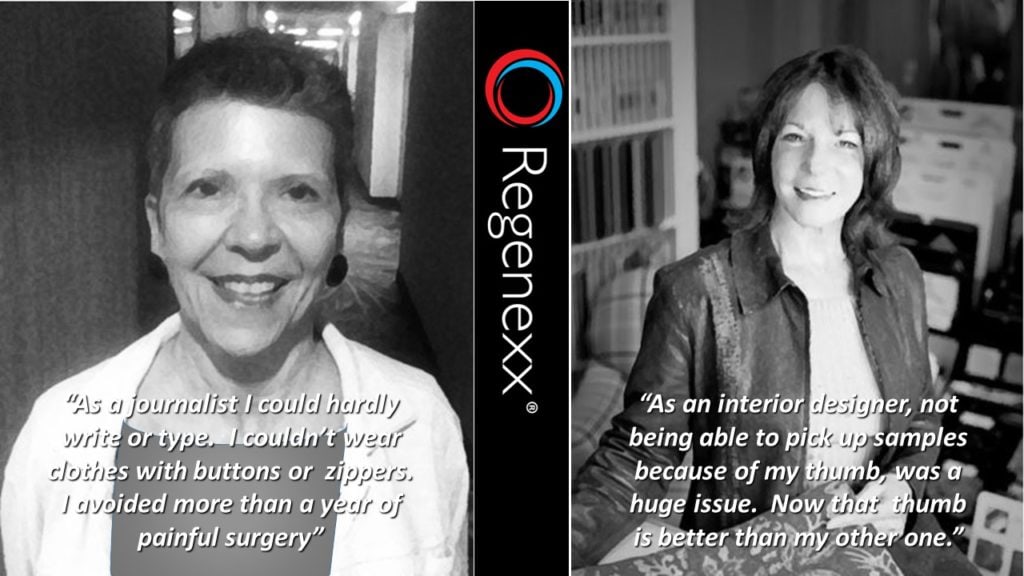Texting Thumb Treatments: A Tale of Two Hands…
Texting thumb is a real epidemic. Using our thumbs to text or type can wear out an important thumb joint, leading to chronic pain at the base of that digit. Texting thumb treatments are regrettably pretty archaic. This is a story of two women who beat the disease with only an injection of their stem cells and without surgery!
The thumb is a marvel of advanced engineering that sets us apart from the vast majority of the animal kingdom. We have “opposable thumbs”, which allow us to manipulate and pick up objects. Take the thumb out of the calculus of the hand, and you end up with four remaining fingers that are pretty useless. This is what happens functionally when someone’s thumb has serious pain; they have difficulty with the simplest of tasks. The most common source of this pain is called the “CMC” joint at the base of the thumb. It’s the joint that gives the thumb all of that wonderful mobility and that allows it to interact with each one of the four other fingers.
Arthritis in the CMC can be caused by our modern overuse of the joint in repetitive tasks like typing and texting. We take for granted that our forebears used their hands differently in many tasks during the day. However, the same modern task like typing, performed millions of times in a row, can place too much force on specific areas of the joint. When you’re young and have loads of natural stem cells in the joint, the CMC can handle the extra stress because the stem cells repair the daily wear and tear. As we age and our native population of stem cells declines, the wear and tear is more than the cells can handle and arthritis sets in. Options for patients with CMC arthritis are pretty sparse. The treatment usually begins with splinting or PT and then moves on to a cortisone shot that can harm the joint further. When that fails to provide long-term relief, it’s either a former dog surgery whereby a tendon is coiled up and placed in the joint to add cushion, a notorious spacer that has a poor track record, or a horrifically bad thumb joint replacement that just isn’t yet ready for prime time.
These two patients decided they didn’t want any part of those modern half-baked options. Both had a multi-year history of declining hand function and both had our whole person approach to their problem that culminated in injecting their own stem cells into the CMC joint and surrounding ligaments using precise ultrasound and fluoroscopic guidance. Their statements about how that worked are above. Both have now dodged the big surgery bullet!
The upshot? CMC arthritis is a real problem of modern society. For patients that have it, their hands become utterly useless. The surgical options are poor at best, but we’ve seen good success with precise placement of the patient’s own stem cells into the joint and surrounding structures! Here’s a link to one of research studies on the topic of thumb stem cells.
If you have questions or comments about this blog post, please email us at [email protected]
NOTE: This blog post provides general information to help the reader better understand regenerative medicine, musculoskeletal health, and related subjects. All content provided in this blog, website, or any linked materials, including text, graphics, images, patient profiles, outcomes, and information, are not intended and should not be considered or used as a substitute for medical advice, diagnosis, or treatment. Please always consult with a professional and certified healthcare provider to discuss if a treatment is right for you.
